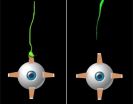(Press-News.org) MEDFORD/SOMERVILLE, Mass. – Comparing hospitalization records with data reported to local boards of health presents a more accurate way to monitor how well communities track disease outbreaks, according to a paper published April 16 in the journal PLOS ONE by a research team led by Elena Naumova, Ph.D., professor of civil and environmental engineering and associate dean at Tufts University School of Engineering.
In a paper titled "Hospitalization Records as a Tool for Evaluating Performance of Food and Water-Borne Disease Surveillance Systems: A Massachusetts Case Study," Naumova and the team examined healthcare statistics for Massachusetts residents 65 and older who were diagnosed with three different foodborne and waterborne illnesses—salmonella, campylobacteriosis, and giardiasis—from January 1991 to December 2004.
Statistics for diseases transmitted via food and water are monitored by the Massachusetts Department of Public Health and local boards of health through reports by health care providers, hospitals and laboratories. Hospital data came from information reported by these institutions to the federal Centers for Medicare and Medicaid Services.
The researchers analyzed and compared the number of cases of salmonella, campylobacteriosis, and giardiasis reported through public health surveillance with the number of hospital admissions for the same infection recorded by the federal Centers for Medicare and Medicaid Services to establish each infection 's surveillance to hospitalization ratio (SHR) for cities and towns across the state.
In their data analysis for salmonella, for example, the team was able to calculate an average statewide SHR of one hospitalization for every 1.7 cases of the infection reported through the surveillance system.
"Some municipalities had SHRs below the state average and this means fewer cases were being reported to those boards of health than the number of patients infected," says Naumova.
The paper describes several reasons for the deviations. For one, patients with mild symptoms sometimes do not seek medical care. Some who do seek clinical care do not have laboratory tests to determine specific causes. Third, not every case gets reported to the local boards of health.
Also, some municipalities have less than adequate resources to collect complete information to confirm cases, says co-author Alfred DeMaria, Jr., medical director of the Bureau of Infectious Disease in the Massachusetts Department of Public Health. "This is not a matter of lack of diligence," says DeMaria "A big component of this is shortage of resources on the local level to get all the information needed to determine that every possible case is actually a case. Communities need to set priorities to focus on the cases that appear to present the most risk to the public."
Moving forward, Naumova says that "using the SHR framework allows us to pinpoint potentially underreporting towns and potentially provide more support for these municipalities. SHR can be an effective and complementary tool to better design the strategies for evaluating and improving surveillance systems. Better surveillance systems allow public health authorities to detect diseases and identify potential areas for targeted interventions."
First author of the study, Siobhan Mor, a faculty member of the Veterinary Science/Marie Bashir Institute for Infectious Diseases and Biosecurity at The University of Sydney in Australia and Tufts University School of Medicine, who developed the methodologies for the SHR framework, agrees. "These methodologies have applications beyond this study—from Sudbury to Sydney—and in contexts beyond these three infections," she says. "We're hopeful that these methodologies could be used to improve public health surveillance systems worldwide."
INFORMATION:
This study was funded by the National Institute of Environmental Health Sciences [R01ES013171] and received additional support from the National Institute of Allergy and Infectious Diseases [U19 AI062627 and NO1-A150032].
Mor SM, DeMaria A Jr, Naumova EN (2014) Hospitalization Records as a Tool for Evaluating Performance of Food- and Water-Borne Disease Surveillance Systems: A Massachusetts Case Study. PLoS ONE 9(4): e93744. doi:10.1371/journal.pone.0093744
Tufts University School of Engineering Located on Tufts' Medford/Somerville campus, the School of Engineering offers a rigorous engineering education in a unique environment that blends the intellectual and technological resources of a world-class research university with the strengths of a top-ranked liberal arts college. Close partnerships with Tufts' excellent undergraduate, graduate and professional schools, coupled with a long tradition of collaboration, provide a strong platform for interdisciplinary education and scholarship. The School of Engineering's mission is to educate engineers committed to the innovative and ethical application of science and technology in addressing the most pressing societal needs, to develop and nurture twenty-first century leadership qualities in its students, faculty, and alumni, and to create and disseminate transformational new knowledge and technologies that further the well-being and sustainability of society in such cross-cutting areas as human health, environmental sustainability, alternative energy, and the human-technology interface.
Researchers see hospitalization records as additional tool
2014-04-17
ELSE PRESS RELEASES FROM THIS DATE:
The surprising consequences of banning chocolate milk
2014-04-17
VIDEO:
Director of the Cornell Food and Brand Lab, Brian Wansink recommends, "There are other ways to encourage kids to select white milk without banning the chocolate. Make white milk appear...
Click here for more information.
For many children eating school lunch, chocolate milk is a favorite choice. What would happen if chocolate milk were banned from school cafeterias? "Students take 10% less milk, waste 29% more and may even stop eating school meals," says Andrew Hanks, ...
Family ties in the language jungle
2014-04-17
This news release is available in German. The only linguistic data available for Carabayo, a language spoken by an indigenous group that lives in voluntary isolation, is a set of about 50 words. This list was compiled in 1969 during a brief encounter with one Carabayo family. Frank Seifart of the Max Planck Institute for Evolutionary Anthropology in Leipzig, Germany, and Juan Alvaro Echeverri of the Universidad Nacional de Colombia in Leticia, Colombia, have now analysed this historical data set and compared it with various languages (once) spoken in the region. The ...
High disease load reduces mortality of children
2014-04-17
This news release is available in German. Children who have been conceived during a severe epidemic are more resistant against other pathogens later in life. For the first time this has been proved by researchers at the Max Planck Institute for Demographic Research (MPIDR) in Rostock, Germany, for the 18th century epidemics of measles and smallpox in the Canadian province of Québec. Children who were conceived during the wave of measles in 1714 and 1715 died significantly less often from smallpox 15 years later than children who had been conceived before the measles ...
Declining catch rates in Caribbean green turtle fishery may be result of overfishing
2014-04-17
A 20-year assessment of Nicaragua's legal, artisanal green sea turtle fishery has uncovered a stark reality: greatly reduced overall catch rates of turtles in what may have become an unsustainable take, according to conservation scientists from the Wildlife Conservation Society and University of Florida.
During the research period, conservation scientists estimated that more than 170,000 green turtles were killed between 1991 and 2011, with catch rates peaking in 1997 and 2002 and declining steeply after 2008, likely resulting from over-fishing. The trend in catch rates, ...
In old age, lack of emotion and interest may signal your brain is shrinking
2014-04-16
MINNEAPOLIS – Older people who have apathy but not depression may have smaller brain volumes than those without apathy, according to a new study published in the April 16, 2014, online issue of Neurology®, the medical journal of the American Academy of Neurology. Apathy is a lack of interest or emotion.
"Just as signs of memory loss may signal brain changes related to brain disease, apathy may indicate underlying changes," said Lenore J. Launer, PhD, with the National Institute on Aging at the National Institutes of Health (NIH) in Bethesda, MD, and a member of the American ...
Dermatologists with access to sample drugs write costlier prescriptions, Stanford study finds
2014-04-16
STANFORD, Calif. — Dermatologists with access to free drug samples are more likely than those without access to samples to write prescriptions for drugs that are more expensive, according to a study by researchers at the Stanford University School of Medicine.
Although studies have shown that most physicians do not believe that the availability of free samples affects their behavior or recommendations for patients, the researchers found that the average retail cost of the prescriptions written by dermatologists with access to samples are about twice the cost of prescriptions ...
Free drug samples can change prescribing habits of dermatologists
2014-04-16
The availability of free medication samples in dermatology offices appears to change prescribing practices for acne, a common condition for which free samples are often available.
Free drug samples provided by pharmaceutical companies are widely available in dermatology practices.
The authors investigated prescribing practices for acne vulgaris and rosacea. Data for the study were obtained from a nationally representative sample of dermatologists in the National Disease and Therapeutic Index (NDTI), a survey of office-based U.S. physicians, and from an academic medical ...
Atypical brain connectivity associated with autism spectrum disorder
2014-04-16
Autism spectrum disorder (ASD) in adolescents appears to be associated with atypical connectivity in the brain involving the systems that help people infer what others are thinking and understand the meaning of others' actions and emotions.
The ability to navigate and thrive in complex social systems is commonly impaired in ASD, a neurodevelopmental disorder affecting as many as 1 in 88 children.
The authors used functional magnetic resonance imaging to investigate connectivity in two brain networks involved in social processing: theory of mind (ToM, otherwise known ...
For cells, internal stress leads to unique shapes
2014-04-16
From far away, the top of a leaf looks like one seamless surface; however, up close, that smooth exterior is actually made up of a patchwork of cells in a variety of shapes and sizes. Interested in how these cells individually take on their own unique forms, Caltech biologist Elliot Meyerowitz, postdoctoral scholar Arun Sampathkumar, and colleagues sought to pinpoint the shape-controlling factors in pavement cells, which are puzzle-piece-shaped epithelial cells found on the leaves of flowering plants. They found that these unusual shapes were the cell's response to mechanical ...
Researchers track down cause of eye mobility disorder
2014-04-16
Imagine you cannot move your eyes up, and you cannot lift your upper eyelid. You walk through life with your head tilted upward so that your eyes look straight when they are rolled down in the eye socket. Obviously, such a condition should be corrected to allow people a normal position of their head. In order to correct this condition, one would need to understand why this happens.
In a paper published in the April 16 print issue of the journal Neuron, University of Iowa researchers Bernd Fritzsch and Jeremy Duncan and their colleagues at Harvard Medical School, along ...



